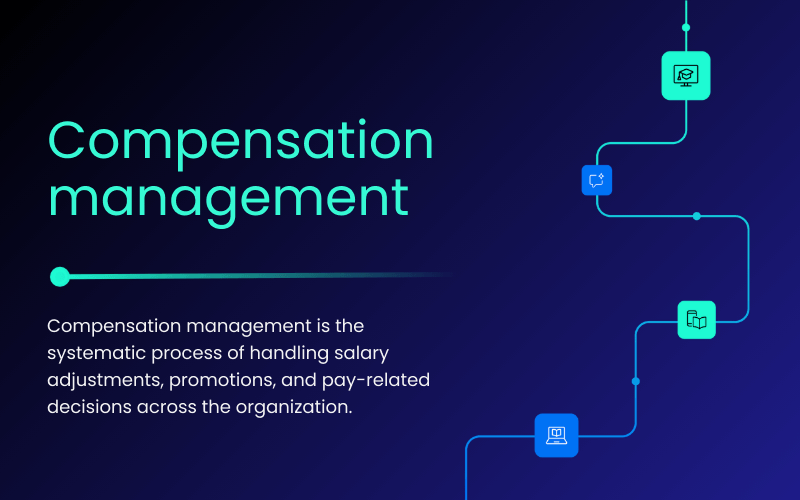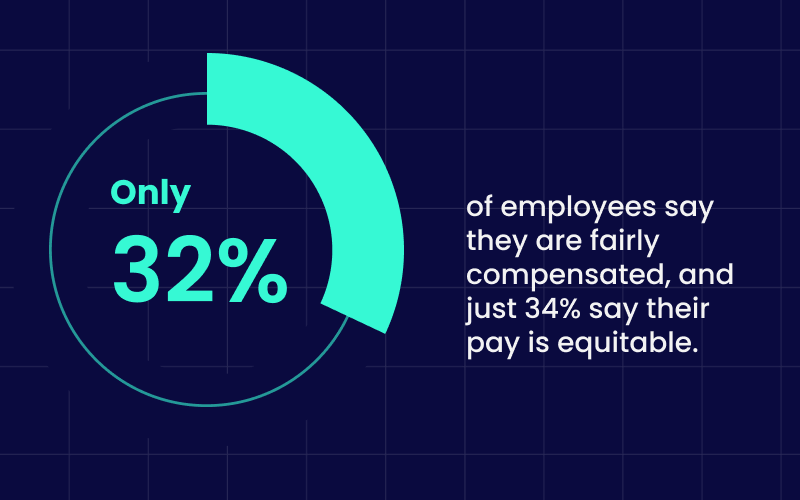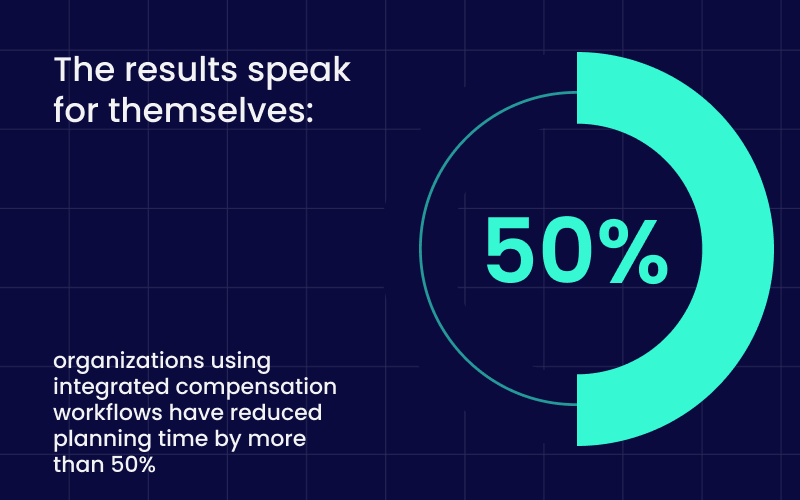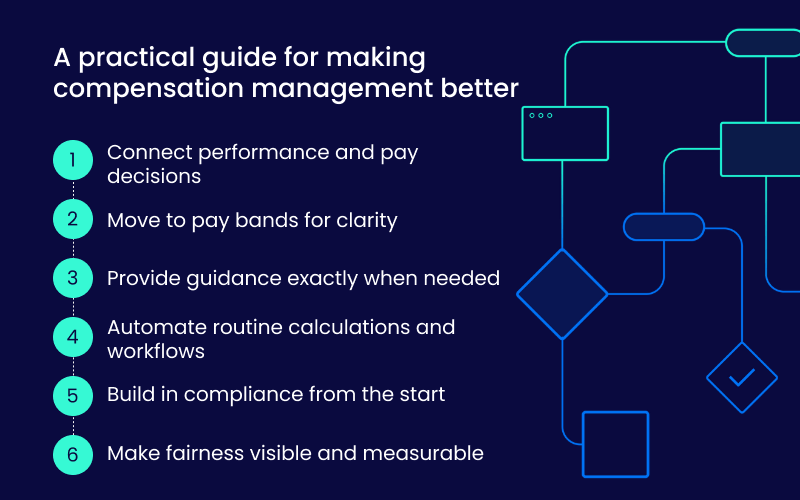Compensation decisions are some of the most sensitive conversations in any organization. Getting them wrong doesn’t just create administrative headaches—it damages trust, creates equity issues, and can lead to costly turnover. But while the stakes will always be high, the process itself can be streamlined to ensure fairness, consistency, and compliance.
The challenge is that most organizations still rely on disconnected systems and manual workflows that create exactly the problems they’re trying to avoid. When managers can’t easily access salary guidelines or performance data isn’t linked to compensation decisions, even well-intentioned choices can lead to inequity and employee dissatisfaction.
What is compensation management?

Compensation management is the systematic process of handling salary adjustments, promotions, and pay-related decisions across the organization. It typically includes:
- Processing annual salary increases and performance-based adjustments
- Managing off-cycle compensation requests outside standard review periods
- Ensuring decisions align with performance data and company salary guidelines
- Maintaining compliance with pay equity laws and internal policies
While this sounds straightforward, effective compensation management requires seamless coordination between performance reviews, HR policies, and payroll systems. When these elements are disconnected, organizations struggle with inconsistency, compliance risks, and employee trust issues.
The challenges
For most teams, the biggest hurdle is the fragmented nature of compensation decisions. Performance reviews happen in one system, salary guidelines live in spreadsheets or policy documents, and compensation planning occurs in yet another platform. This disconnect makes it nearly impossible for managers to make informed, consistent decisions.
Traditional compensation workflows compound the problem. Manual processes are slow and error-prone, salary guidelines are difficult to access when needed, and compliance requirements often become afterthoughts rather than built-in safeguards. The pressure to make fair decisions without clear guidance creates anxiety for managers and inconsistent outcomes for employees.
It’s no surprise that only 32% of employees say they are fairly compensated, and just 34% say their pay is equitable. Without streamlined processes and clear guidance, organizations struggle to maintain the fairness that drives both performance and retention.

The Solution: WalkMe
This is where digital adoption platforms like WalkMe become game-changers.
Rather than forcing managers to navigate between disconnected systems and hunt for policy documents, these platforms provide contextual guidance directly within existing compensation tools. WalkMe, specifically, offers step-by-step workflows, automated compliance checks, and real-time access to salary guidelines, ensuring managers can make informed decisions without leaving their current screen.
The results speak for themselves: organizations using integrated compensation workflows have reduced planning time by more than 50%. But implementation success depends on following proven best practices.

A practical guide for making compensation management better

- Connect performance and pay decisions
When performance data and compensation systems integrate seamlessly, managers get the complete picture they need for fair decisions. Tools like WalkMe can surface relevant performance metrics directly within compensation workflows, ensuring salary adjustments align with actual results rather than gut feelings.
- Move to pay bands for clarity
Pay bands reduce complexity by grouping roles into clear ranges that account for job type, location, and experience. This structure simplifies administration and speeds up hiring decisions while giving employees transparency about their growth potential and where they stand in the range.
- Provide guidance exactly when needed
In-app guidance eliminates the hunt for policy documents and ensures consistent decision-making. WalkMe can display salary guidelines, compliance reminders, and approval workflows directly within compensation systems, reducing errors and speeding up the process.
- Automate routine calculations and workflows
Integrated systems can benchmark salaries, calculate standard increases, and route requests through approval flows automatically. This automation saves time, reduces manual errors, and allows HR teams to focus on strategic decisions rather than administrative tasks.
- Build in compliance from the start
Rather than treating compliance as an afterthought, embed requirements directly into the workflow. Digital guidance tools can provide real-time reminders about equal pay laws and policy requirements at the moment managers make decisions, preventing issues before they occur.
- Make fairness visible and measurable
Regular pay equity analysis and transparent salary ranges build trust and improve outcomes. Automated reporting can surface potential disparities early, while clear communication about compensation philosophy helps employees understand decisions.
Putting it all together
The combination of these strategies creates a comprehensive compensation ecosystem. When implemented effectively with platforms like WalkMe, HR teams can ensure consistency across all managers, track decision patterns, and continuously improve the process based on real usage data.
Although 31% of employees are unhappy with their compensation and more than half are likely to leave, many organizations still treat compensation management as an annual administrative task. WalkMe bridges this gap by ensuring compensation decisions are guided, consistent, and aligned with both performance and company values.
What success looks like
When compensation management is done well, the benefits are clear:
- Fewer salary exceptions and more consistent application of guidelines
- Higher compliance with pay bands and equity requirements
- Reduced time spent on compensation planning and administrative tasks
- Improved employee trust and satisfaction with pay decisions
Organizations that invest in streamlining this process create ripple effects throughout the company. With only 18% of employees worldwide working in high-fairness environments, but companies seeing 26% higher performance and 27% greater retention when fairness is present, getting compensation right becomes a competitive advantage that directly impacts the bottom line.

